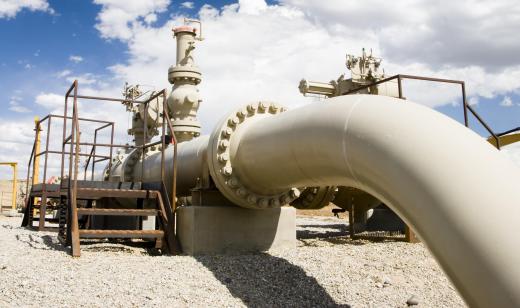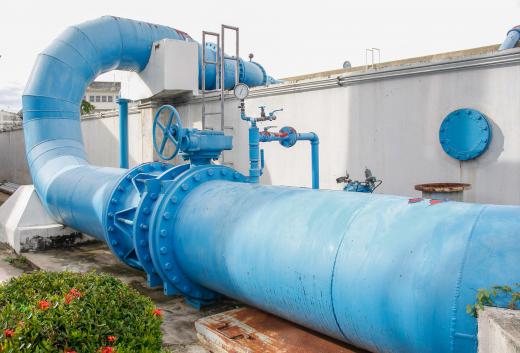A flange plate is a flat, circular disk that is welded onto the end of a pipe and allows it to be bolted to another pipe. Typically used in fuel and water pipelines, the two flange plates will be bolted together with a gasket in between them. The flange plate will have bolt holes all around the perimeter and will be used to create junctions, tees and joints.
When building a pipeline, the length of the pipes used are not always known. By manufacturing the pipe separate from the flange plate, the welders can cut the pipe to length and weld a flange plate in place to join the pipes at any needed length. The plates can also be welded to the pipe on a slight bias, allowing two pipes to be joined that may not be precisely lined up.

Flange plate designs are uniform in any given size regardless of materials used to create them. This allows a 6-inch (15 cm) black pipe flange to mate perfectly with a 6-inch stainless steel flange. The flange plates will have a serrated finish on the inside mating surface, which allows the plate to seat into the gasket material. This ensures a perfect seal between two joining pipes.

There are many different styles of flange plates that are used for different purposes. The blind plate acts as a cover or cap for a pipe and is used to seal or block off a pipe. The slip-on style of plate allows the plate to be slid onto a pipe and then welded in place. Using the socket weld-style of plate on the ends of two pipes allow them to be easily connected and disconnected.
Flange plates with chamfers and bevels are used to assist in lining up two pipes which are out of alignment. Plates with a studding outlet are plates that have studs inserted around the plate in place of bolt holes. This type of plate allows the pipes to be joined by sliding one flange plate over the studs on a second flange plate and then nuts are tightened to secure the two.
Flange plates make it possible to remove a section of pipe or to add onto a pipeline with ease. Without the flange plates, the pipes would require cutting and welding in order to be separated or added onto. This would be much more expensive and the pipe line would be out of service for a greater length of time.
